It’s like Guy de Maupassant, who often ate at the Eiffel tower’s restaurant because it was the only place in Paris where you didn’t have to look at it.
:-) That’s funny.
But some day you have to leave the plane again, and when you come back and open the hangar door …
LeSving wrote:
Why would you rather have a Lycoming?
First of all, I don’t think you find more durable and proven aircraft engines in abusive aero club scenarios than the O360. It’s as idiot-proof as it gets and I personally don’t know any engine that reached TBO that easy in such numbers. I will be able to learn from contradicting data, though.
Secondly, it’s a bit lighter and a bit cheaper to maintain (both in parts as in work hours, if you need to have it serviced. Time to do a leak test, change spark plugs, etc. is dependend on the amount of cylinders). Granted, it might be a minuscule argument.
My strongest objection was to install an engine and plan to use it in off-design operating points. Before answering, I wanted to verify that point, though. Unfortunately, I haven’t found any performance charts of the Conti IO360AF. But here is what I have found based on uninstalled power out of the engine manuals.
The uninstalled power is aimed to be at 180 hp. This would translate in reduced power settings of 153 hp for 85%, 135 hp for 75%, 117 hp for 65%, and 99 hp for 55%. Based on what I have read here, this would be the operating points of many pilots. (I personally operate usually at the higher power outputs, except I needed the range desperately, but that’s a different topic). Based on the 210 (190) hp of the Conti IO360B (Conti IO360A) this would result in 86% (95%) for full 180 hp, 73% (81%) for 153 hp, 64% (71%) for 135 hp, 56% (61%) for 117 hp and a mere 47% (52%) for the 99 hp in the original 55% demand.
This has an advantage in engine efficiency in high power settings, because they meet maximum efficiency of the original engine design, but get’s worse at lower power settings. Here are the values for the specific fuel consumption in LBS/HP/HR at FULL RICH mixture settings, ISA, sea level as stated in the engine manuals:
| Lycoming O360A | Lycoming O360B | Lycoming O360C2B | Lycoming IO360A | Continental IO360A | Continental IO360C | |||||||
| HP | LBS/BHP/HR | GAL/HR | LBS/BHP/HR | GAL/HR | LBS/BHP/HR | GAL/HR | LBS/BHP/HR | GAL/HR | LBS/BHP/HR | GAL/HR | LBS/BHP/HR | GAL/HR |
| 180 | 0,545 | 16,32 | 0,545 | 16,32 | 0,53 | 15,87 | 0,48 | 14,38 | 0,44 | 13,18 | 0,445 | 13,33 |
| 153 | 0,49 | 12,47 | 0,545 | 13,87 | 0,455 | 11,58 | 0,477 | 12,14 | 0,44 | 11,20 | 0,44 | 11,20 |
| 135 | 0,47 | 10,56 | 0,515 | 11,57 | 0,435 | 9,77 | 0,47 | 10,56 | 0,465 | 10,45 | 0,455 | 10,22 |
| 117 | 0,46 | 8,96 | 0,51 | 9,93 | 0,44 | 8,57 | 0,48 | 9,34 | 0,48 | 9,34 | 0,475 | 9,25 |
| 99 | 0,465 | 7,66 | 0,52 | 8,57 | 0,46 | 7,58 | 0,51 | 8,40 | 0,46 | 7,58 | 0,515 | 8,48 |
| FULL RICH | FULL RICH | FULL RICH | FULL RICH | FULL RICH | FULL RICH | |||||||
| 91/96 | 80/87 | 91/96 | 100/130 | 100/130 | 100/130 |
I was surprised of how bad the Lycoming IO360 was in comparison to the O360, I had expected a more efficient engine. However, using lean mixture there is a lot room for improvement, but that hasn’t been available on all models and for the sake of comparability, full rich mixture was displayed.
In the end, my hunch was right: at lower power settings, the carbutetted Lycoming O360s are more efficient, because the Conti IO360 is way off design at these power outputs. Unfortunately I have not power curves of the Conti IO360AF or even the Conti IO360B, which is rated at 180hp, as I have learned. However, the Conti IO360 would operate at it’s most efficient power settings during climb and / or high power cruise. That could be an argument for the derated engine.
That is how I knew :-)
There is an article in info pilote (the official magazine of the FFA) on the Tecnam P2010. Clearly calls out performance issues on take off at max weight as well as worse climb performance than a C172. Otherwise the Aeroclub that has had the plane for 100h now seem quite satisfied. It is rented wet for 177euros/hour to their members. EASA has just approved it for the use of MOGAS.
not the best scans possible of the article but here goes anyway…
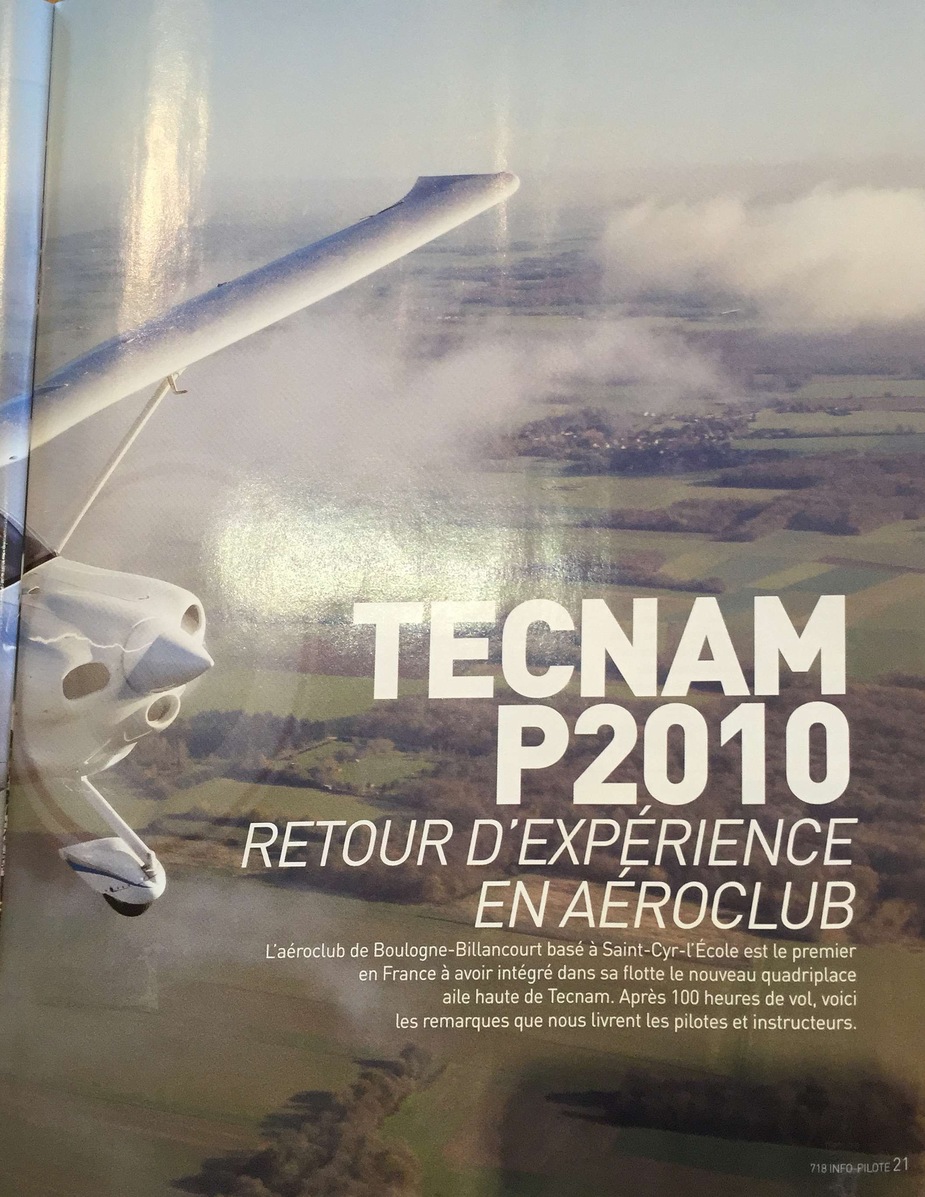
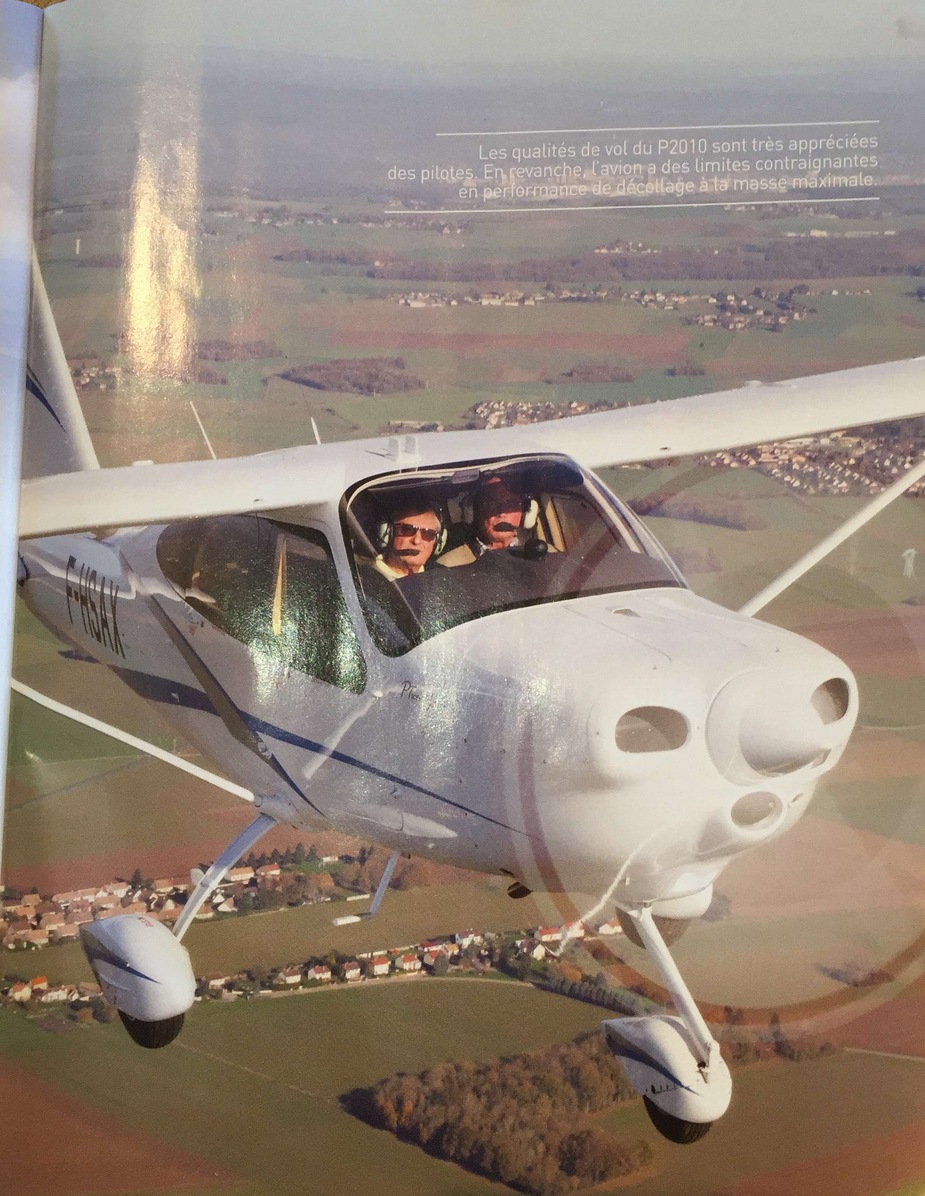
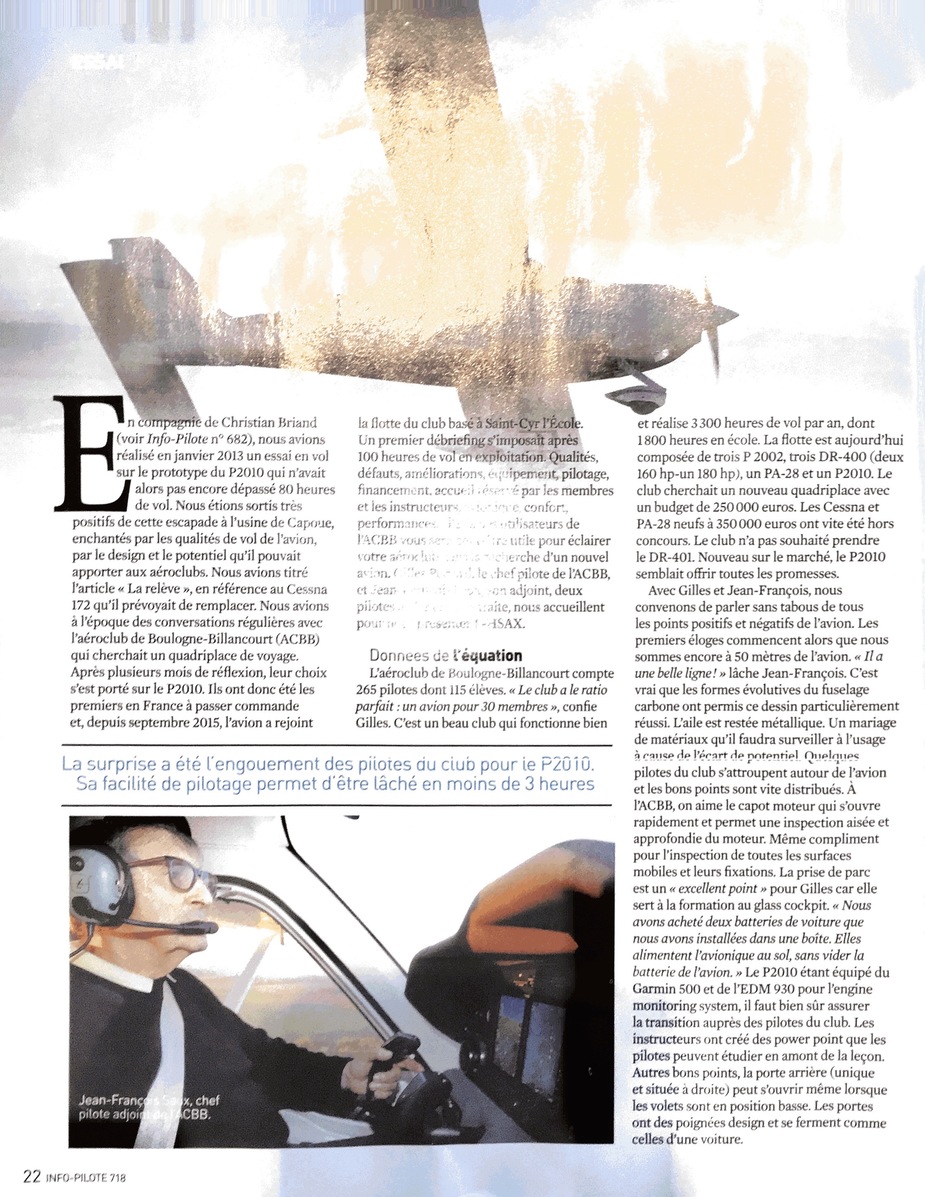
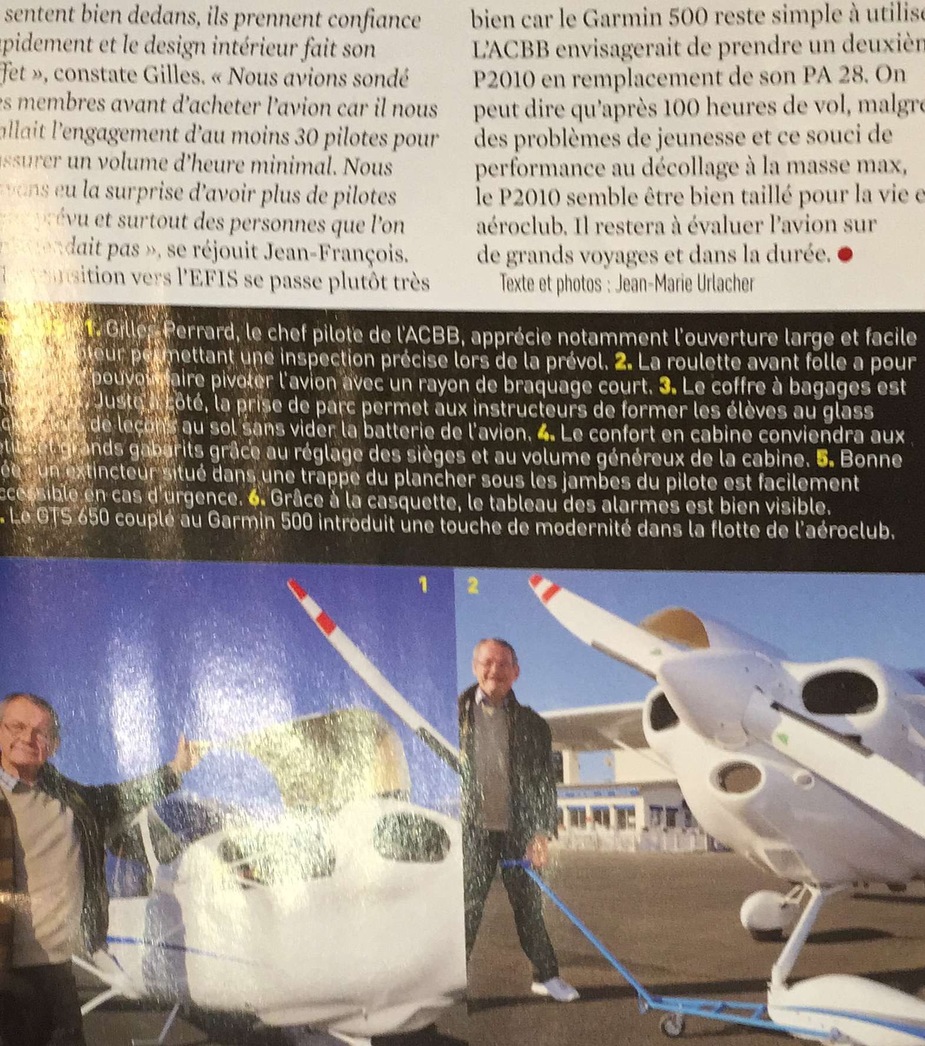
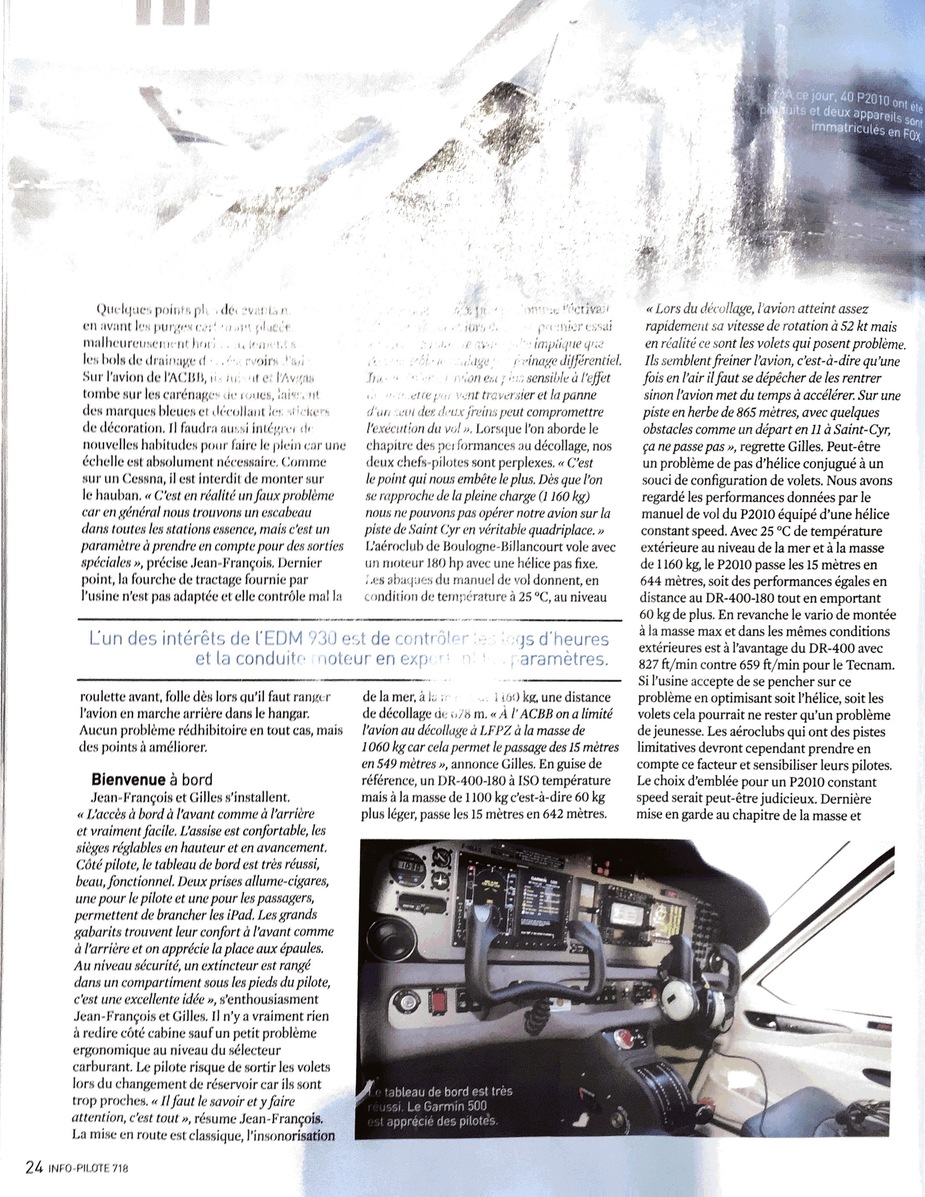

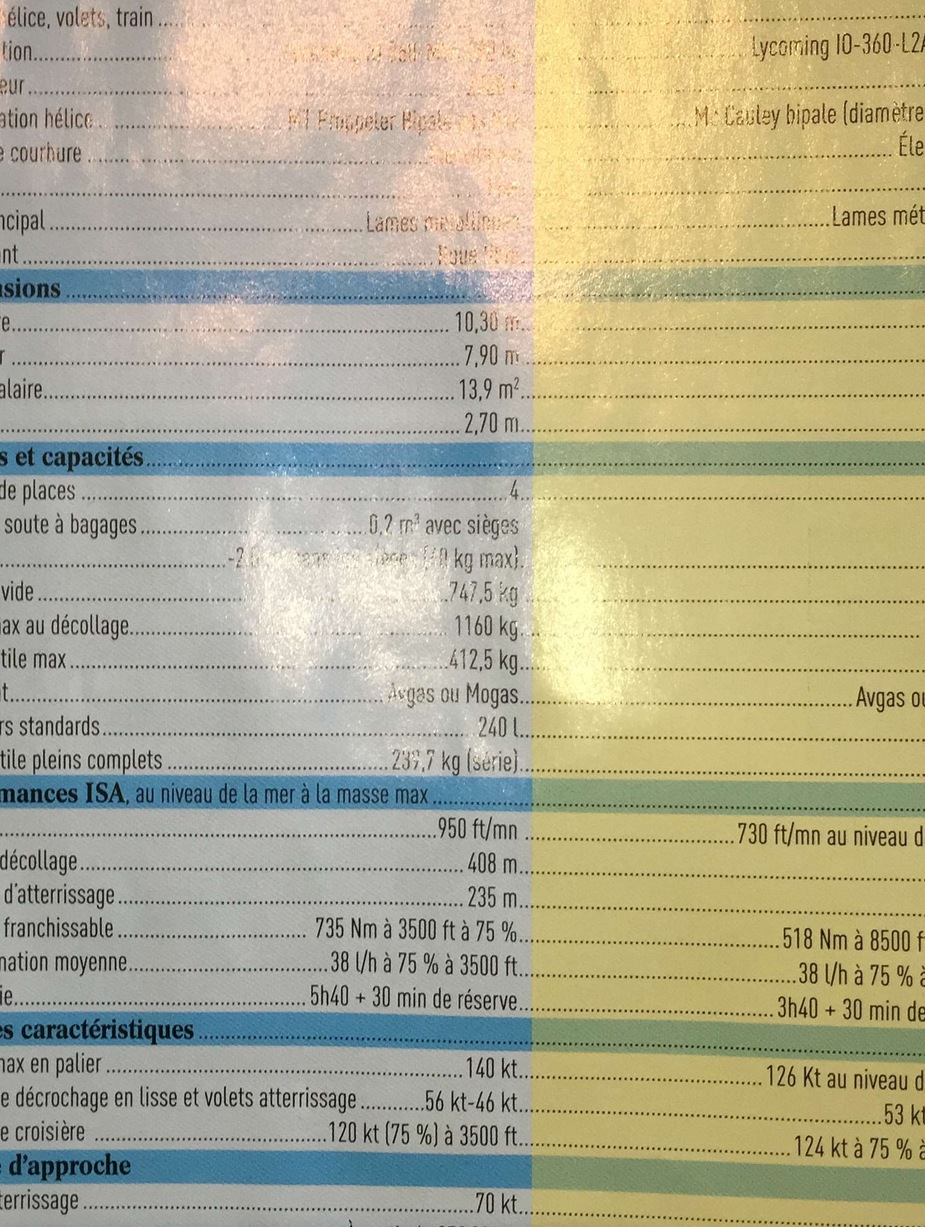
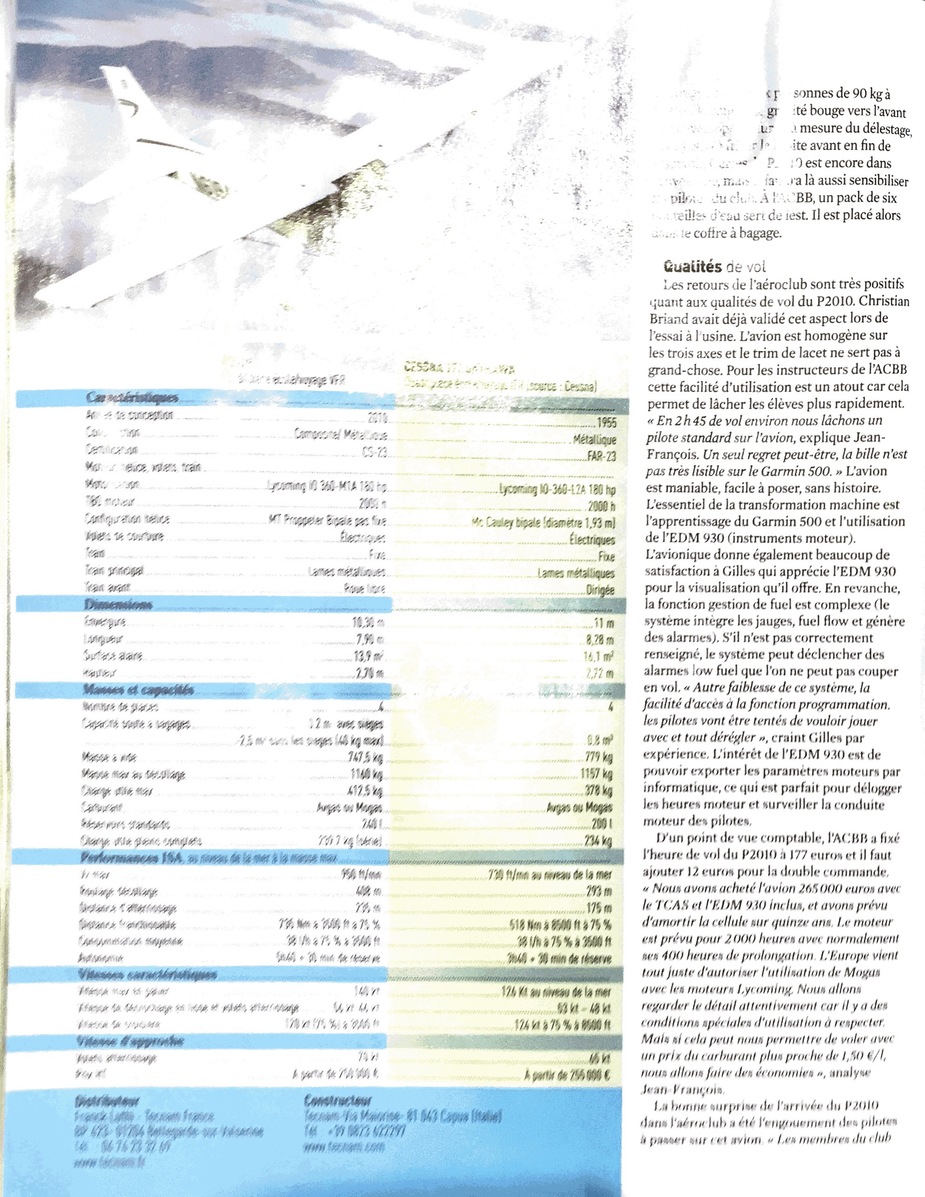
I have just read that the P2010 is now mogas-approved by EASA, which is a good step foreward for European operators.
The C4 is still stuck with its “UL91-approved” engine.
boscomantico wrote:
P2010 is now mogas-approved by EASA
The P2010 has a 10 inches narrower cockpit, 20kts slower cruise at 40% higher fuel burn, 350 lbs less useful load, has struts, has 400 hours less TBO, has 400nm less range, costs $100k more, does not have a touch-screen glass panel, and no BRS chute versus the FDC4.
But the P2010 has one big advantage over the FDC4: it is available now, while the C4 is largely still vaporware…